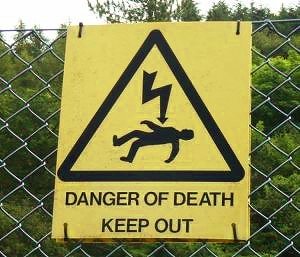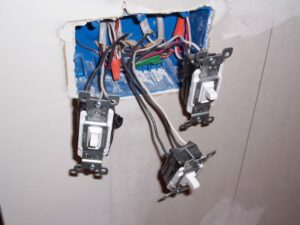Electrical safety at work
Electricity can kill. According to the Health and Safety Executive (HSE) approximately 1000 accidents, a year are caused by electric shocks. About 30 of these cases are fatal and arise from working with overhead or underground power cables. This means electrical safety at work is a serious issue.
Individuals working directly with electricity, for example, engineers and electricians dealing with overhead power cables, installation and circuit assemblies, are most at risk. However, those working indirectly with electricity such as farmers, construction workers and office-based employees can still be exposed to the dangers of electricity if control measures are absent and regular risk assessments are not carried out.
Un der the Health and Safety at Work etc. Act 1974 employers have legal duties and obligations “to ensure, so far as is reasonably practicable, the health, safety and welfare at work” of all their employees. Additionally, the Electricity at Work Regulations 1989, applies more specifically to the use of electricity within the workplace from electrical supplies to the use of electrical equipment. This legislation places a joint responsibility on employers, employees and contractors to ensure equipment is correctly installed, used and maintained.
der the Health and Safety at Work etc. Act 1974 employers have legal duties and obligations “to ensure, so far as is reasonably practicable, the health, safety and welfare at work” of all their employees. Additionally, the Electricity at Work Regulations 1989, applies more specifically to the use of electricity within the workplace from electrical supplies to the use of electrical equipment. This legislation places a joint responsibility on employers, employees and contractors to ensure equipment is correctly installed, used and maintained.
What are the causes of electricity-related injuries in an office environment?
Electrical appliances that are inadequately installed and maintained, faulty wiring, overloaded sockets, using frayed extension cables and operating equipment near to water or with wet hands, can all contribute to electrical injuries.
A simple checklist will help you and your employees understand the Do’s and Don’ts of electrical safety.
Employers duties in relation to Electrical Safety at work:
- Ensure electrical equipment is suitable for the purpose it is intended.
- Ensure equipment has undergone all necessary safety checks before use.
- Ensure equipment is safely installed and regularly maintained by a qualified engineer.
- Ensure that all live parts of electrical equipment are inaccessible during operation.
- Provide all employees with adequate training and information on electrical safety.
Employees duties in relation to Electrical Safety at work:
- Switch off appliances when not in use and at the end of the day.
- Never force a plug into a socket if it doesn’t fit.
- Never run long cables across busy work areas. This will minimise falls and prevent cables from fraying.
- Never operate an electrical appliance with wet hands.
- If working in front of an electrical panel, maintain a distance of at least 3 feet.
- Never use equipment that gives off a strange odour or noise.
- Never overload an electrical socket.
- Never use frayed cables.
- Always report equipment which is not working correctly to your line manager or Health and Safety representative.
- Undergo training course on electrical safety.
How can VinciWorks help?
VinciWorks’ RoSPA-certified course delivers short, interactive health and safety training units that are customised to the specific office the user works in, including a section on electrical equipment and the dangers associated with its use. The online course explores common causes of electrical-related accidents – including faulty appliances and damaged or overloaded sockets, plugs and cables – and provides guidance on how to check for potential hazards and minimise the risk of accidents.
The course highlights key actions that can be taken to reduce accidents, including regular risk assessment and risk control management, using experts to install electrical equipment, and the benefits of regular maintenance and safety testing. It also provides advice on how to treat an electrical-related injury and outlines the steps to take if an accident does happen.
As with all our courses, our health and safety course can be fully customised to reflect the needs of your organisation and industry. This means that you can communicate specific messages and offer training that addresses particular issues that you might face. A designated course administrator can use our integrated authoring tool to edit the text and images within the course, and link to organisation-specific documentation, all at no extra cost.













